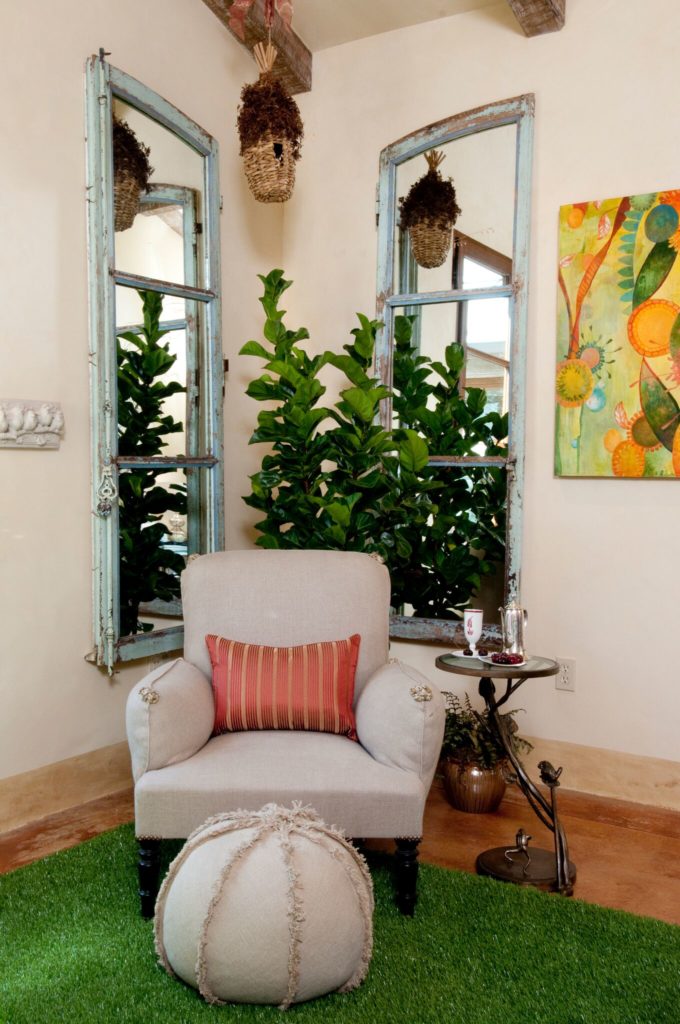 Have you ever looked around your home and wondered where all the space went? Even with tidy closets and lots of storage you are still feeling hemmed in – what’s going on? The answer lies with space planning in the many unrevealed spaces that are not being utilized to full advantage.
Have you ever looked around your home and wondered where all the space went? Even with tidy closets and lots of storage you are still feeling hemmed in – what’s going on? The answer lies with space planning in the many unrevealed spaces that are not being utilized to full advantage.
Space Planning Tips
Here are a few helpful hints to ease your rooms back to a more spacious feel.
Hidden Square Footage
Many rooms have hidden square footage in the corners, upper wall areas, recessed closets, and coved areas.
– Corners make ideal desk and shelf areas – especially with curved surfaces – which leaves the length of the walls free for other furniture. Upper wall shelving (maybe connected to two corner storage areas) provides space for art and artifact display, or storage for things like toys that can be visually decorative when not in use. This creates floor space and makes the room feel more open.
– Take the doors off a recessed closet and create a lounge or a home office area . This will maximize a spare room into a lovely media or reading room while adding two feet to the floor plan. If storage is needed, consider a repurposed armoire or stackable shelves and corner racks. This also applies to work out rooms, nurseries, libraries, and guest rooms.
– If you have coved recesses, niches, or cut out architectural features use them! Those decorative features can be additional display shelving, entry table stations for keys and mail, or hidden storage. Coved areas make great reading nooks and libraries too!
Color and Pattern Influence
Color and pattern are also spatial influencers. Placement of these elements is essential for balance and is what makes a room look and feel more spacious.
– Accent walls create depth and therefore give the illusion of more space. Not all spatial design is three dimensional. Color counts as a spatial element because it makes you see the room differently!
– Harmonize the patterns and forms in a room by deciding on two compatible geometries. When the geometries complement each other it creates a harmonious and peaceful arrangement, which prevents too much visual chaos in a space. An example of this would be combining spirals with rectangles; such as a seven foot rectangular sofa covered in a tone on tone spiral motif fabric. The circular pattern softens the hard edges of the sofa and makes it feel more inviting. Stick with that premise with round side tables or an oval coffee table and find a fabric pattern for the curtains in a rectangular motif.
If you cannot change the actual space through reconstruction, than the next best thing is to maximize it! Small space planning changes can have a large impact on how you live and how you feel in your home environment. Thinking “outside of the box” is quite literal in this sense – don’t let those four walls limit your imagination.
Sebastopol Living Magazine/ HAVE YOU EVER/ Creative Interior Design Solutions/ April issue 2018
MARTHA CHANNER is co-owner and artistic director of MC² The Science of Design, an interior design company that specializes in custom design, space planning, and fine art installations. www.mctwodesign.com 619-865-7885 Sebastopol, Ca.
Martha received her BFA in painting and printmaking, with a minor in Art history, from Barat College in Illinois and attended The School of the Art Institute of Chicago, where she studied spatial design, sculpture, and paint applications. She is a performance artist, fine art painter, and choreographer, which she incorporates into her large scale installations and exhibitions. Her work is shown nationally in galleries and museums. www.marthachanner.com

